Two effusive vents open up at Etna volcano, Italy
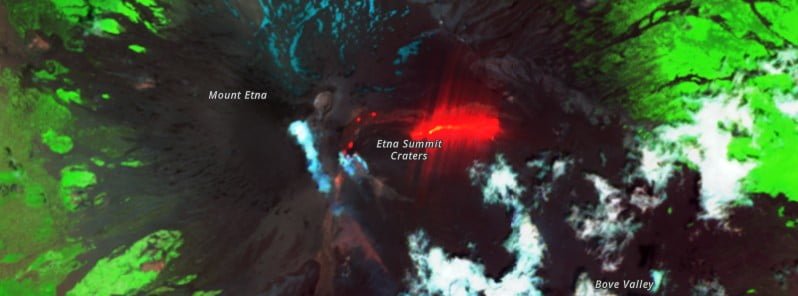
Two new effusive vents have opened up on the flank of Etna’s Southeast Crater on May 29, 2022. The effusive rate is currently low. The Aviation Color Code remains at Orange.
The first vent opened up at 06:05 UTC in the upper part of the Valle del Bove at a height of about 2.8 km (1.7 miles) above sea level.1
The second went, discovered after an inspection carried out in the afternoon, is located at an altitude of about 3.2 km (2 miles) a.s.l.
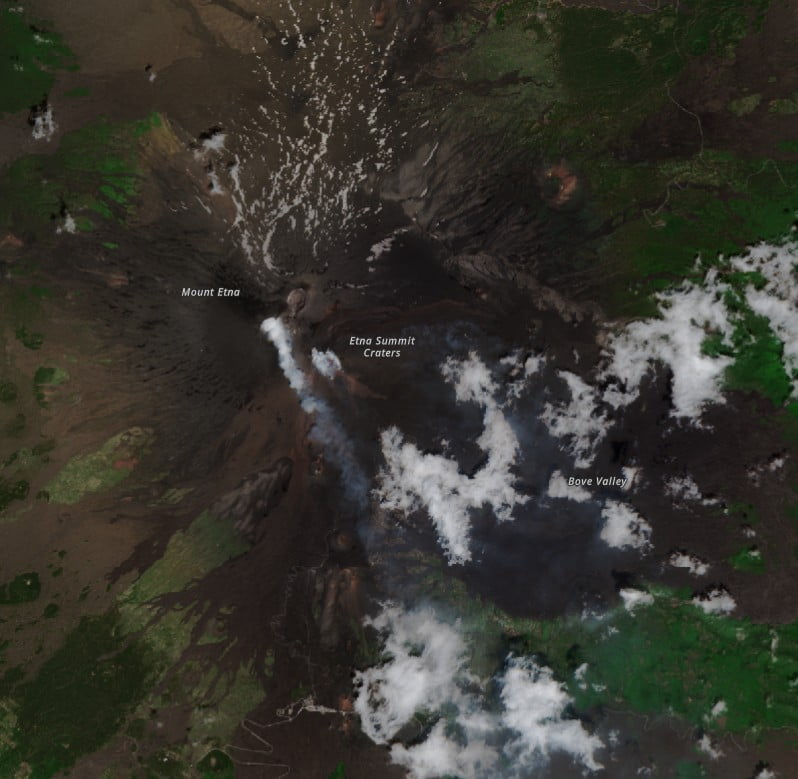
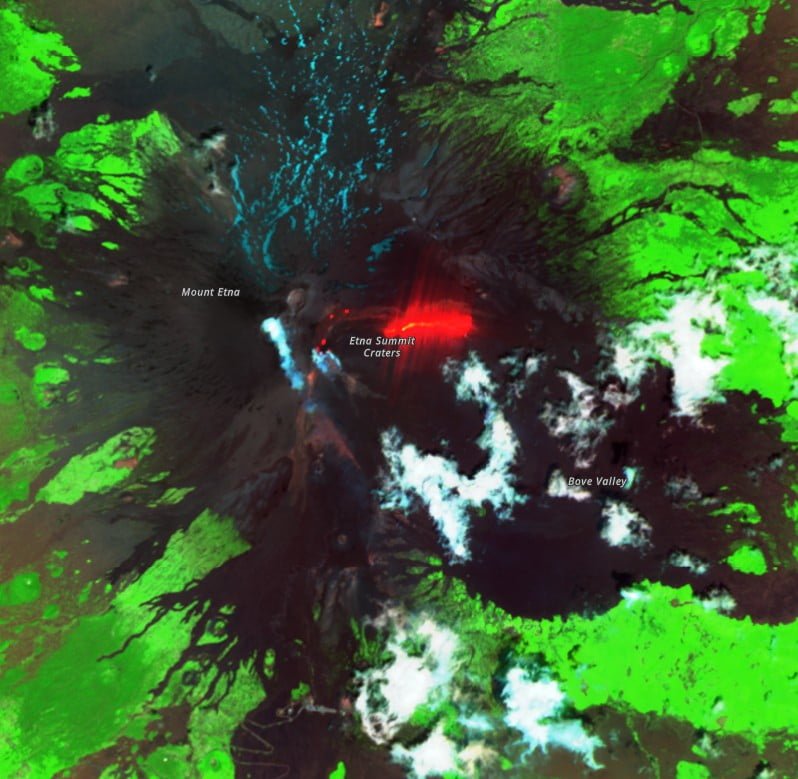
The effusive rate at the time of inspection was low and the flow was moving inside the Valle del Bove in the direction of Monte Simone.
The most advanced lava fronts have reached an altitude of about 2.1 km (1.3 miles).
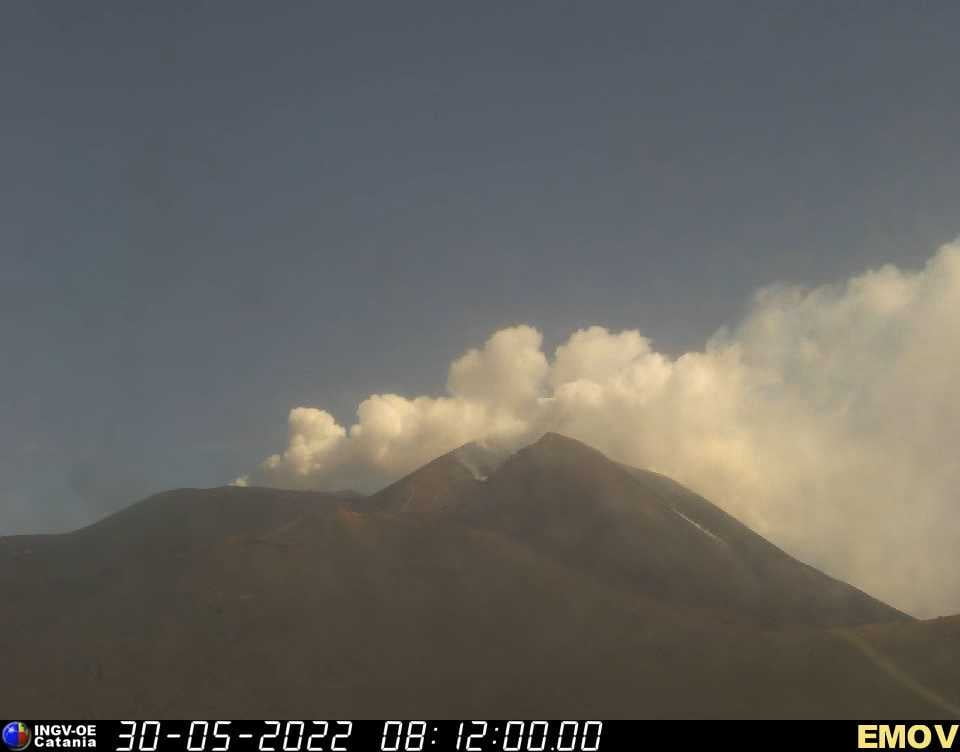
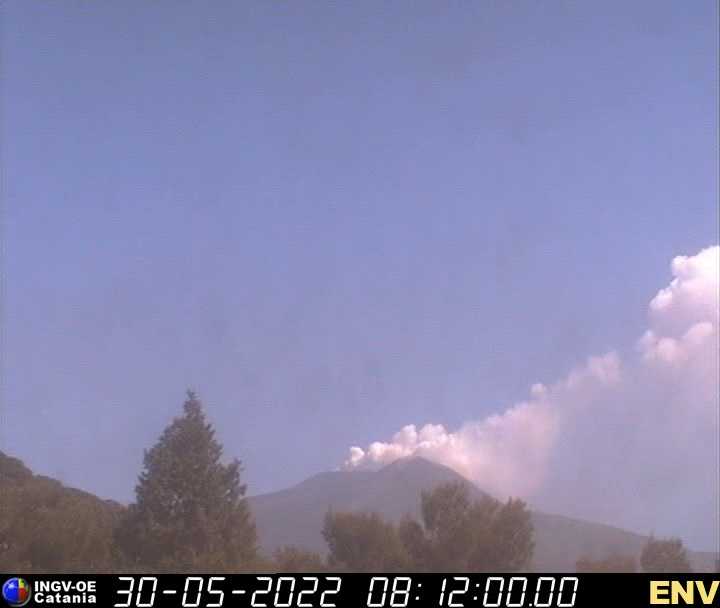
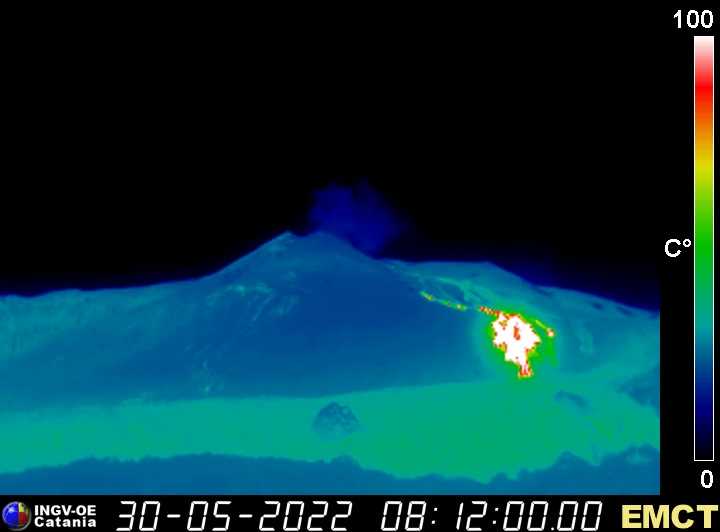
The amplitude of the tremor, after an increase in the morning, was stationary in the high end.
The signal sources were located in the area of the SE crater at an altitude of about 3 km (1.8 miles) a.s.l.
The infrasonic signal was affected by noise caused by winds but as far as what could be seen from the recordings, the activity seems low.
There are no significant variations in soil deformation.
Geological summary
Mount Etna, towering above Catania, Sicily’s second-largest city, has one of the world’s longest documented records of historical volcanism, dating back to 1500 BCE.
Historical lava flows of basaltic composition cover much of the surface of this massive volcano, whose edifice is the highest and most voluminous in Italy.
The Mongibello stratovolcano, truncated by several small calderas, was constructed during the late Pleistocene and Holocene over an older shield volcano. The most prominent morphological feature of Etna is the Valle del Bove, a 5 x 10 km (5.1 x 6.2 miles) horseshoe-shaped caldera open to the east.
Two styles of eruptive activity typically occur at Etna. Persistent explosive eruptions, sometimes with minor lava emissions, take place from one or more of the three prominent summit craters, the Central Crater, NE Crater, and SE Crater (the latter formed in 1978).
Flank vents, typically with higher effusion rates, are less frequently active and originate from fissures that open progressively downward from near the summit (usually accompanied by strombolian eruptions at the upper end).
Cinder cones are commonly constructed over the vents of lower-flank lava flows. Lava flows extend to the foot of the volcano on all sides and have reached the sea over a broad area on the SE flank.2
References:
1 Comunicato Etna – INGV – 19:02 UTC on May 29, 2022
2 Etna – Geological summary – GVP
Featured image credit: INGV

Commenting rules and guidelines
We value the thoughts and opinions of our readers and welcome healthy discussions on our website. In order to maintain a respectful and positive community, we ask that all commenters follow these rules.